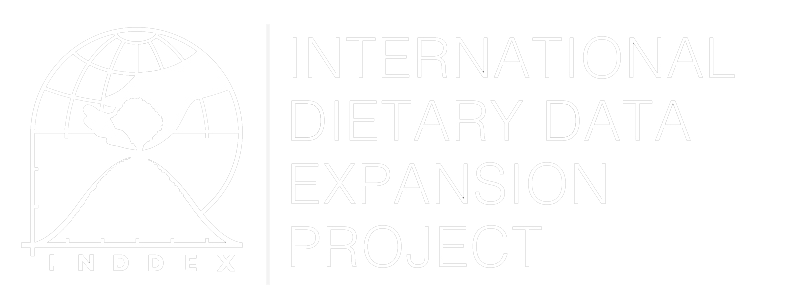Minimum Acceptable Diet (MAD-IYCF) for children 6-23 months old
Overview
The Minimum Acceptable Diet (MAD) for children 6-23 months old is part of the suite of indicators of infant and young child feeding (IYCF) practices developed by UNICEF and WHO. The Indicators for Assessing IYCF Practices guidelines were revised in 2021, culminating in 17 indicators grouped under 'breastfeeding indicators', 'complementary feeding indicators', and 'other indicators'.
The MAD indicator is a composite of three indicators composed of the Minimum Dietary Diversity (MDD), Minimum Meal Frequency (MMF), and Minimum Milk Feeding Frequency (MMFF). MAD is defined as the percentage of children 6-23 months of age who consumed a minimum acceptable diet during the previous day (WHO/UNICEF, 2021).
Method of Construction
According to the revised WHO/UNICEF 2021 guidelines, the MAD indicator is calculated as follows:
Numerator: Children 6-23 months of age who consumed at least the minimum dietary diversity (MDD) and minimum meal frequency (MMF) during the previous day AND are either breastfed or consumed the minimum milk feeding frequency (MMFF) during the previous day.
Denominator: Children 6-23 months of age.
The calculation is done in two steps:
First step
Calculate the three indicators (MDD, MMF, and MMFF) and code "1" for "Yes, achieved" and "2" for "No".
Second step
Estimate MAD using the following formula.
For breastfed infants, if MDD and MFF are both achieved then MAD is achieved. For non-breast infants, if MDD, MMF, and MMFF are all achieved, then MAD is achieved.
Minimum Dietary Diversity (MDD): To achieve minimum dietary diversity, breastfed children must have consumed foods and beverages from at least 5 out of 8 of the food groups during the previous day. Non-breastfed children must have done the same, with the additional requirement of consuming at least two milk feeds the previous day. See the MDD indicator for infants and young children for more information on the food groups and how the indicator is calculated.
Minimum Meal Frequency (MFF): To achieve minimum meal frequency, the child must have received solid, semi-solid, or soft foods (including milk for non-breastfed children) the minimum number of times or more over the previous day.
Minimum Milk Feeding Frequency (MMFF): To achieve minimum milk feeding frequency, the child must have consumed at least two milk feeds the previous day.
Uses
The MAD, along with the other IYCF indicators, was developed to make comparisons across and within countries, to describe trends over time, to target/identify populations at risk, target interventions, inform policy decisions, and serve as an impact measure when monitoring and evaluating programs, all at the population level. Because the MAD indicator captures multiple dimensions of feeding, it can be used to compare populations with different rates of continued breastfeeding or compare breastfed and non-breastfed children (WHO/UNICEF, 2021).
Strengths and Weaknesses
One advantage of this indicator is that it is relatively simple to calculate and interpret and is applicable across sociocultural contexts. It is also applicable to both breastfed and non-breastfed children. A weakness of this indicator is that it does not provide quantitative information about children's food and nutrient intake. The indicator was designed to capture optimal complementary feeding patterns to achieve energy and nutrient adequacy (based on WHO recommendations). Still, it was not designed to capture excessive intake of energy, sugar, or fat that would yield information about risks for overweight and obesity (Lele et al., 2016). Other indicators in the suite of IYCF indicators for infants and children 6-23 months are focused on capturing moderation of unhealthy foods, namely "sweet beverage consumption" and "unhealthy food consumption". Guidance on the calculation of these other indicators can be found in the guidance document on indicators for assessing feeding practices for infants and young children (WHO/UNICEF 2021).
Data Source
The MAD indicator is usually constructed from a short Food Frequency Questionnaire (FFQ) administered to the child's caretaker as part of the standard IYCF module. Example questionnaires can be found in the UNICEF 2021 guidance on Indicators for Assessing Feeding Practices for Infants and Young Children. MAD data are also available for many countries in the UNICEF Infant and Young Child Feeding Database and are collected as part of many Demographic and Health Surveys (DHS).
Links to Guidelines
- World Health Organization (WHO) and the United Nations Children’s Fund (UNICEF), (2021). Indicators for assessing infant and young child feeding practices: definitions and measurement methods.
- WHO/UNICEF (2017). Global Nutrition Monitoring Framework: Operational guidance for tracking progress in meeting targets for 2025.
Links to Validation Studies
Links to Illustrative Analyses
- Owais et al. (2016). Minimum acceptable diet at 9 months but not exclusive breastfeeding at 3 months or timely complementary feeding initiation is predictive of infant growth in rural Bangladesh. PLoS One.
- Kambale et al. (2021). Minimum acceptable diet among children aged 6–23 months in south Kivu, Democratic Republic of Congo: a community-based cross-sectional study. BMC pediatrics.
- Acharya et al. (2021). Determinants of minimum acceptable diet feeding among children aged 6–23 months in Odisha, India. Public Health Nutrition.

